
Los come elotes, 2024 Acrylic, oil and spray enamel on canvas 49.2 x 49.2 in (Available)

Máscara con maíz blanco, 2024 Acrylic, oil and spray enamel on canvas 47.2 x 23.6 in (Not Available)
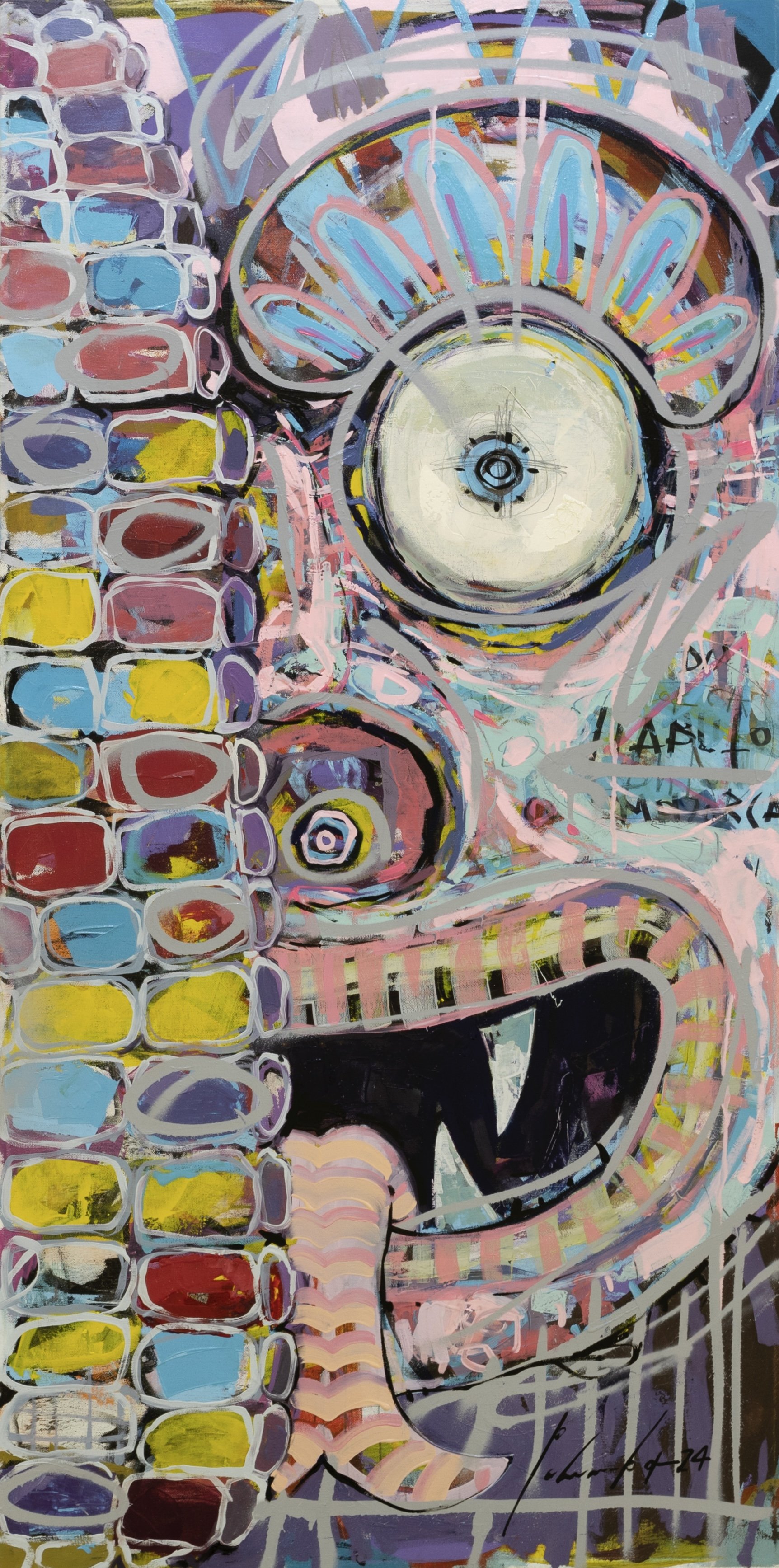
Máscara con maíz de color, 2024 Acrylic, oil and spray enamel on canvas 47.2 x 23.6 in (Not Available)

Diablito con maíz morado, 2024 Acrylic and oil on canvas 31.5 x 31.5 in (Not available)
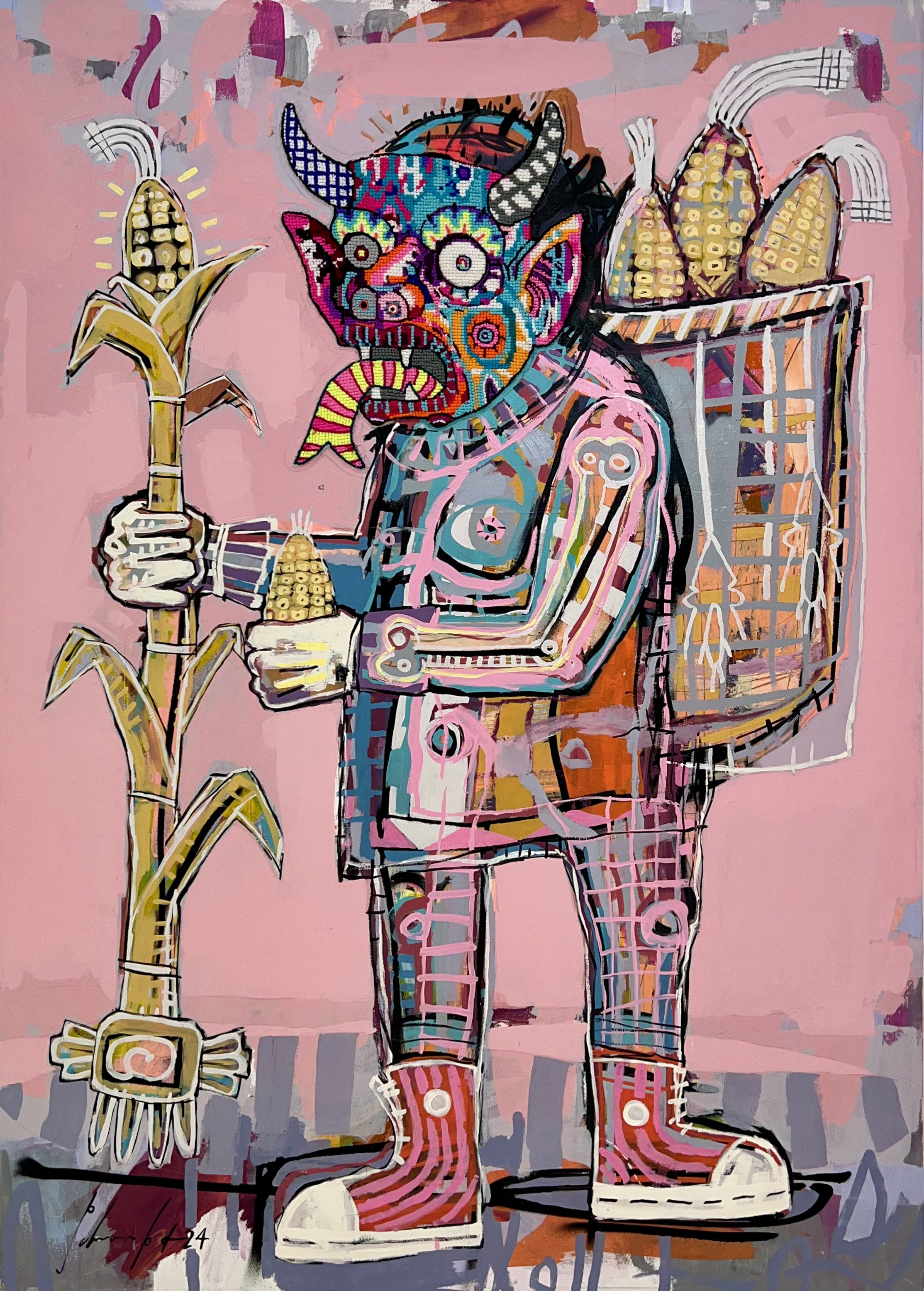
La cosecha del maíz, 2024 Acrylic, oil, marker, spray enamel and embroidery on canvas 55.1 x 39.4 in (Not available)
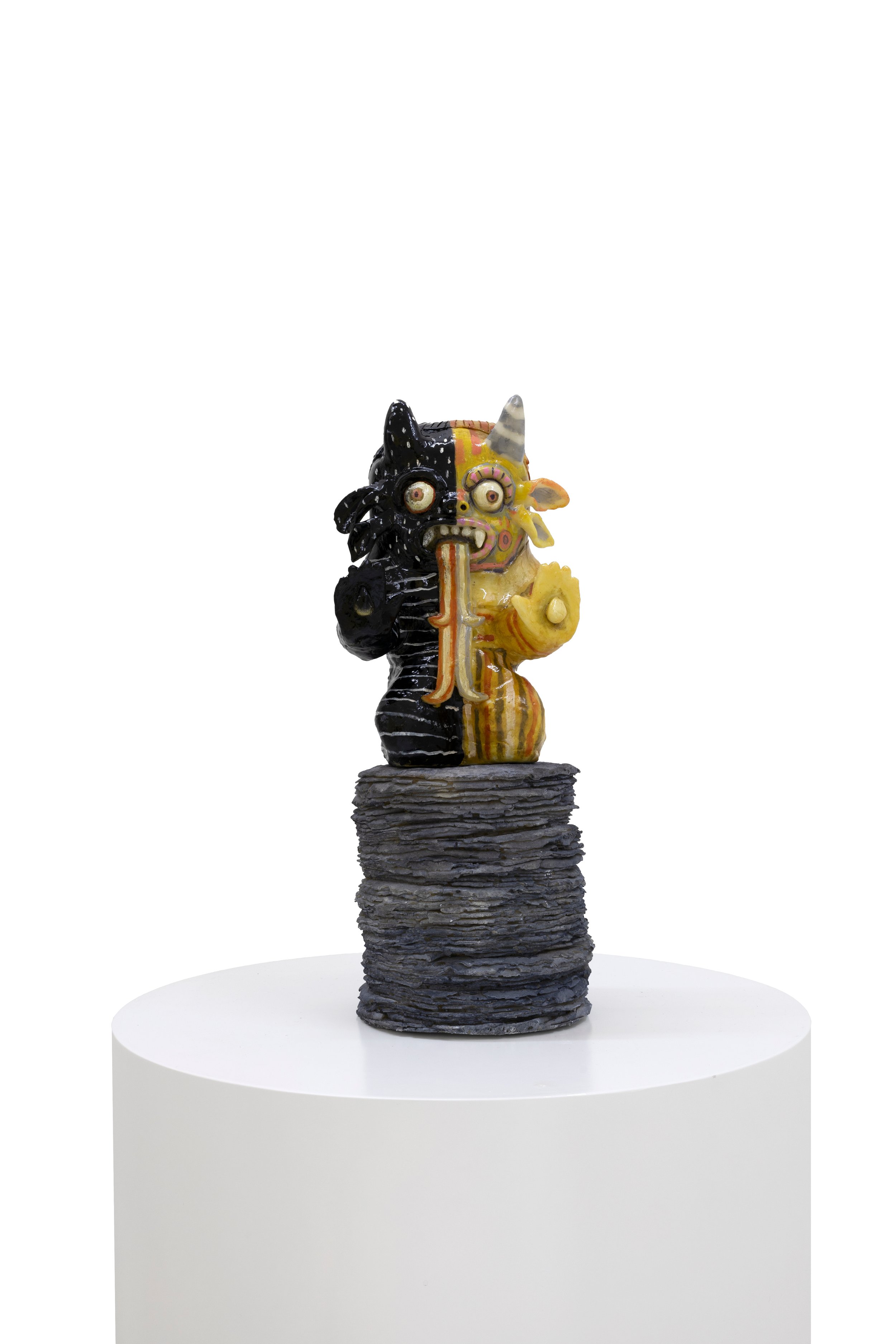
Hincada sobre las tortillas, 2024 Resin and polychrome porcelain 17.7 x 6.7 x 7.9 in (Available)
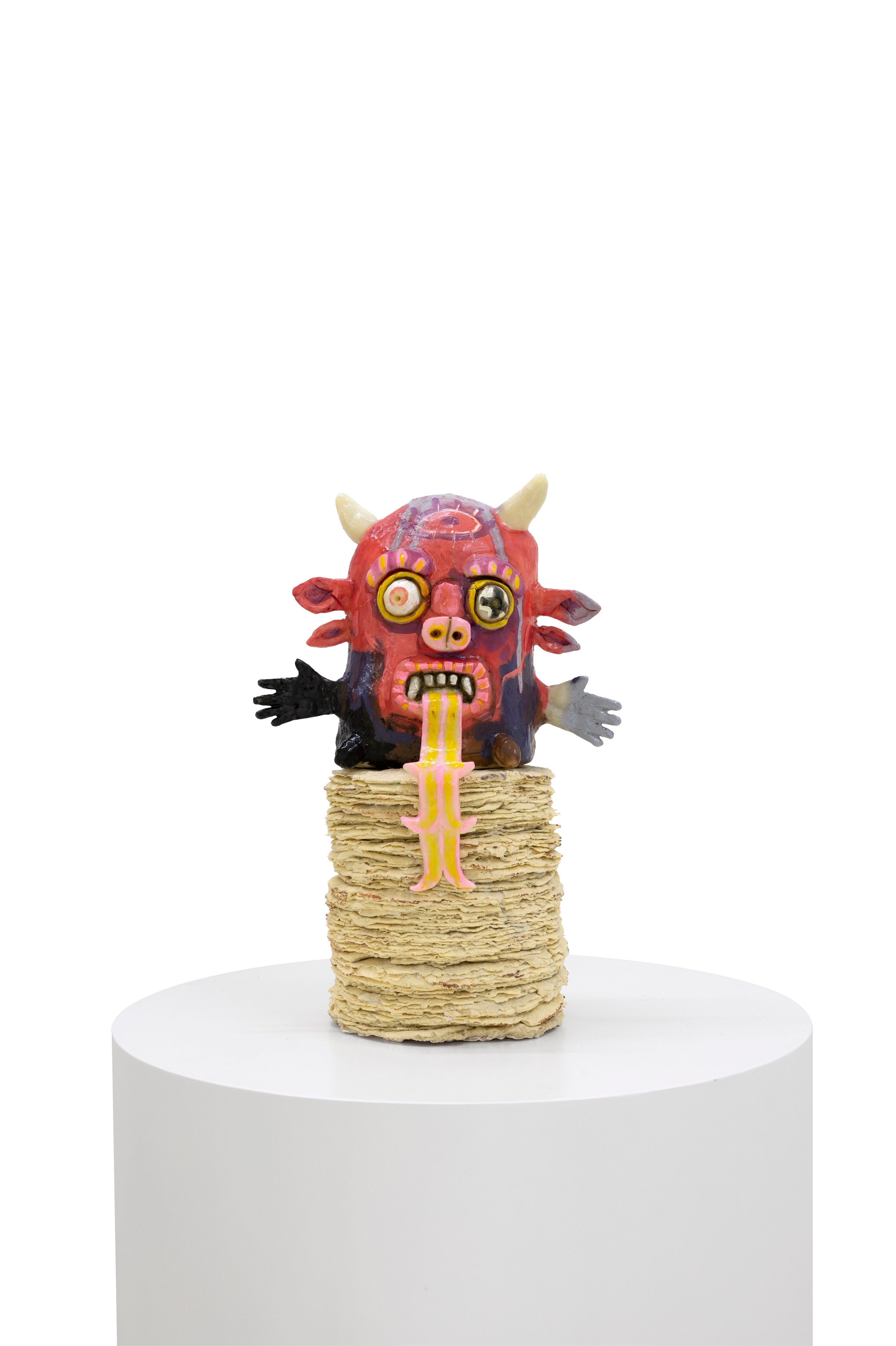
Diablito de tortilla, 2024 Resin and polychrome porcelain 17 x 7.1 x 11 in (Available)
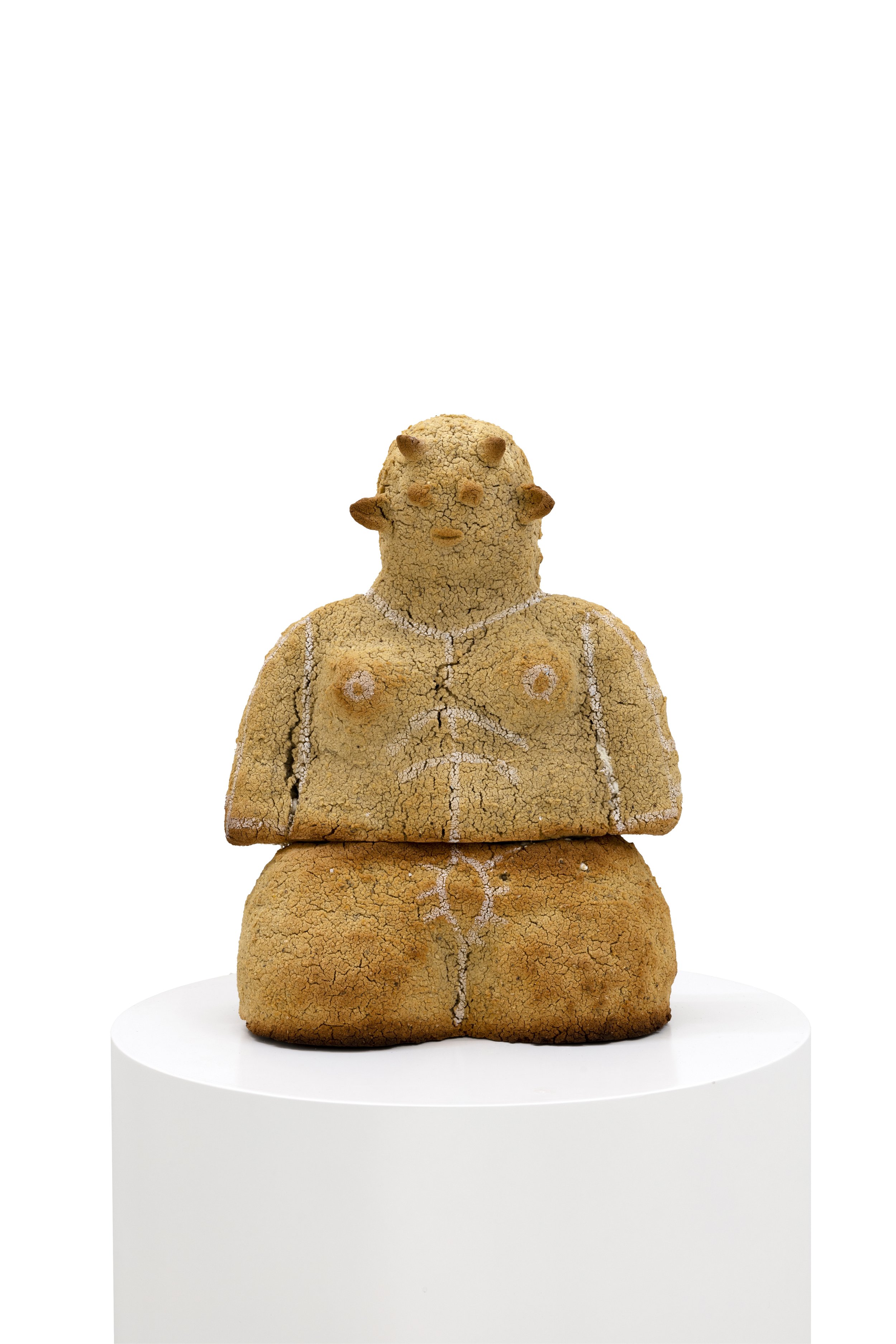
Diablita de contamal, 2024 Baked corn 14.2 x 7.9 x 13.4 in (Available)
Ángel Pahuamba
Statement
Originally from Cherán, a rural community where traditions and crafts are an important part of the social, economic, and cultural fabric. In his work there is a constant search to preserve them; He considers that doing so is vital since it allows us to reflect on our origins, preserve our link with the past, and value the work of those who came before us. Through his artwork, he inquires about the work carried out in the family, as well as collective stories of sacrifice, support, suffering, and even myths and beliefs.
Conceptually, the figure of his father is fundamental in his work. Being an artisan, he left the workshop to better provide for his family. He was the little devil at the town fair for 5 years, two less than the time required (according to legend) to "fulfill" the devil. When my father married my mother, she did not want him to continue doing it, and he says that, when he did not continue, he had several visions where devils appeared, these encounters disappeared when he was able to finish his mission. Although this story is anecdotal, it has directly influenced his work; Angel is interested in inquiring about the connotations that the figure of the devil has in his culture in contrast to the European connotation, thus questioning the moral codes that have been adopted. Unlike the European devil, in the dances it is not something evil, instead, it represents a very playful character.
The traditional elements of his work are part of the Purépecha identity, as a person of the people, it is important to talk about these cultural forms, and he considers that it is our responsibility to project it outward with a plastic proposal. Although he is in favor of preserving traditions, he is also very critical of certain things that should change, since he understands identity not as an entity closed in on itself, but one with possibilities of opening and enrichment, even incorporating dialogues with other cultures.
Resume
Cherán, Mexico, 1978.
He studied Visual Arts at Escuela Popular de Bellas Artes, dependent in the Michoacan University of San Nicolás de Hidalgo from 1998 to 2002. In 2004 he took an Engraving course at Escuela Popular de Bellas Artes, Morelia, he attended the Engineering and Architecture on Paper workshop at Alfredo Zalce Museum of Contemporary Art, in 2012, and in 2003 he took the Fresco techniques workshop. In 2020, he participated in the development of the project and curatorship of the exhibition "Realities and Destinations" for the 14th edition of the FEMSA International Art Biennial, Inestimable Azar, a biennial held in Morelia/Pátzcuaro, Michoacán. In 2021, he made at the Casa of Art and Culture in Paracho, Michoacán a mural "The Purépecha woman (hands that feed and strengthen)". He published the book “Entre colores, líneas y monitos”. Application Guide for the children's plastic arts program of the Secretaría de Cultura de Michoacán, First Edition in 2013.
Throughout his career, he has had more than twenty individual exhibitions, among which stands out “El que por su gusto muere” in 2014 at the Centro Internacional de Artes Visuales en Morelia, Michoacán, as well as “Memorias del Tiempo” in 2018 at Casa Diana Gallery, in San Miguel de Allende and “Xiranhua” in Galería, Casa del Arte y la Cultura Purépecha, Cherán, Michoacán In 2022 he exhibits "Entre máscaras y puños" in the Vinatea Reynoso gallery in Arequipa Peru. He has been part of more than thirty collective exhibitions in Mexico, Chile, the United States, and Costa Rica. He has exhibited three times at CAM Galería, the first in 2020 with “Cherán Anapu'', the second in 2022 with “Los que aquí habitamos” and the third in 2024 with “Desgranando el tiempo”. Among the international collective exhibitions in which he participated are Superstitions in 2017, vol. 1 and 2, and “Exposición itinerante”, both in the Chicago and New York editions.
-
INDIVIDUAL EXHIBITIONS AND PRESENTATIONS
2024:
-"Desgranando el tiempo", at CAM Galería, Mexico City, Mexico.
2023:
-"Entre máscaras y puños", at Universidad de Playa Ancha, Chile.
2022:
-“Entre máscaras y puños”, at Vinatea Reynoso Gallery, Arequipa Perú.
-”Los que aquí habitamos”, at CAM Galería, Mexico City, Mexico.
2020:
-”Cherán Anapu”, at CAM Galería, Mexico City, Mexico.
-”Entre perros y gatos”, at Casa Diana Gallery, San Miguel de Allende, Mexico.
COLLECTIVE EXHIBITIONS AND FAIRS
2023:
-Positions Berlin Art Fair. Tempelhof Airport with CAM Galería. Berlin, Germany.
COLLABORATIONS AND WORK EXPERIENCE
2013-2022:
-Professor at the Centro Cultural UNAM Morelia, Mexico.
